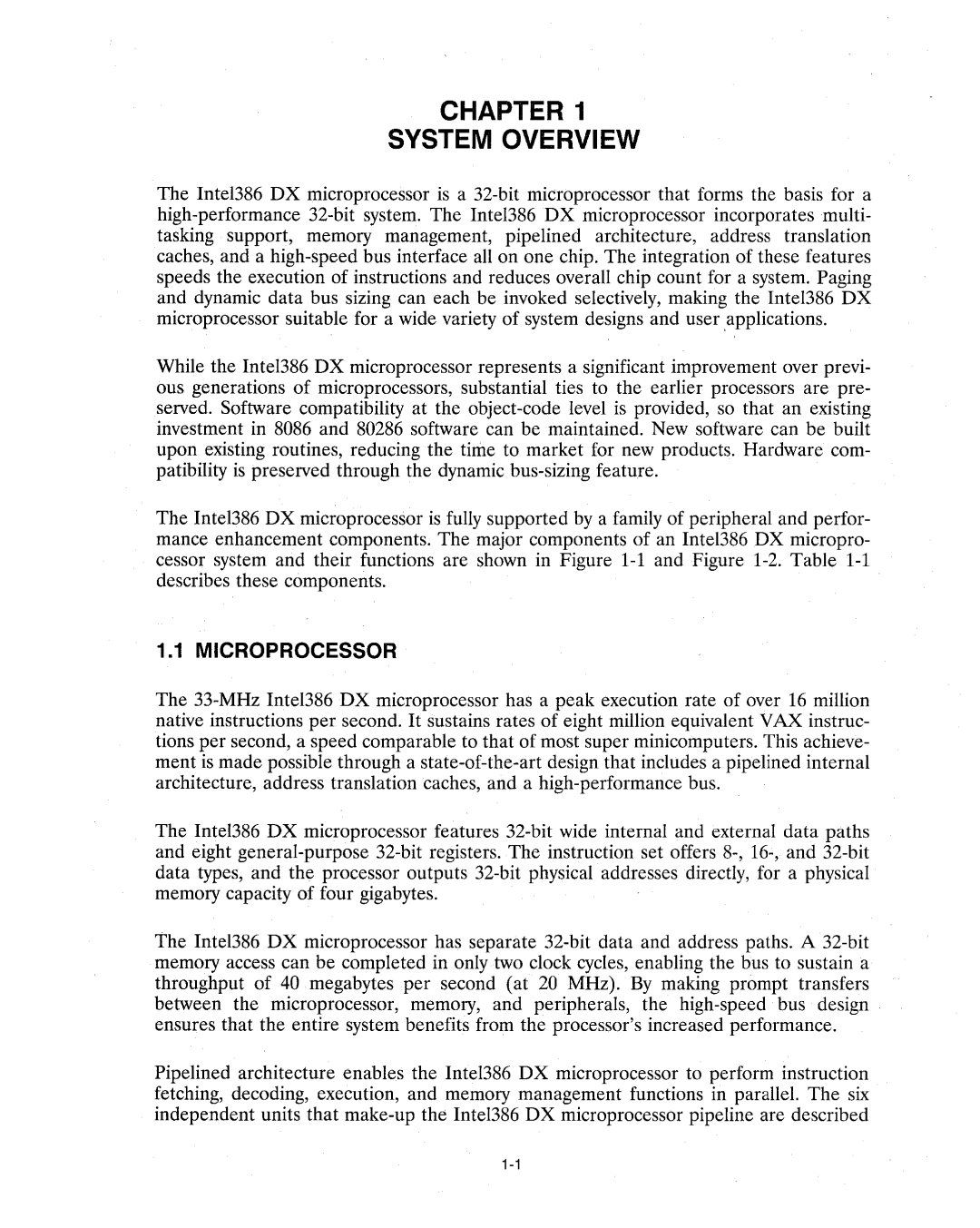CHAPTER 1
SYSTEM OVERVIEW
The Intel386 DX microprocessor is a 32-bit microprocessor that forms the basis for a high-performance 32-bit system. The Inte1386 DX microprocessor incorporates multi- tasking support, memory management, pipelined architecture, address translation caches, and a high-speed bus interface all on one chip. The integration of these features speeds the execution of instructions and reduces overall chip count for a system. Paging and dynamic data bus sizing can each be invoked selectively, making the Intel386 DX microprocessor suitable for a wide variety of system designs and user ,applications.
While the Intel386 DX microprocessor represents a significant improvement over previ- ous generations of microprocessors, substantial ties to the earlier processors are pre- served. Software compatibility at the object-code level is provided, so that an existing investment in 8086 and 80286 software can be maintained. New software can be built upon existing routines, reducing the time to market for new products. Hardware com- patibility is preserved through the dynamic bus-sizing feature.
The Intel386 DX microprocessor is fully supported by a family of peripheral and perfor- mance enhancement components. The major components of an Intel386 DX micropro- cessor system and their functions are shown in Figure 1-1 and Figure 1-2. Table 1-1 describes these components.
1.1 MICROPROCESSOR
The 33-MHz Intel386 DX microprocessor has a peak execution rate of over 16 million native instructions per second. It sustains rates of eight million equivalent VAX instruc- tions per second, a speed comparable to that of most super minicomputers. This achieve- ment is made possible through a state-of-the-art design that includes a pipelined internal architecture, address translation caches, and a high-performance bus.
The Intel386 DX microprocessor features 32-bit wide internal and external data paths and eight general-purpose 32-bit registers. The instruction set offers 8-, 16-, and 32-bit data types, and the processor outputs 32-bit physical addresses directly, for a physical memory capacity of four gigabytes.
The Inte1386 DX microprocessor has separate 32-bit data and address paths. A 32-bit memory access can be completed in only. two clock cycles, enabling the bus to sustain a throughput of 40 megabytes per second (at 20 MHz). By making prompt transfers between the microprocessor, memory, and peripherals, the high-speed bus design ensures that the entire system benefits from the processor's increased performance.
Pipelined architecture enables the Inte1386 DX microprocessor to perform instruction fetching, decoding, execution, and memory management functions in parallel. The six independent units that make-up the Intel386 DX microprocessor pipeline are described

